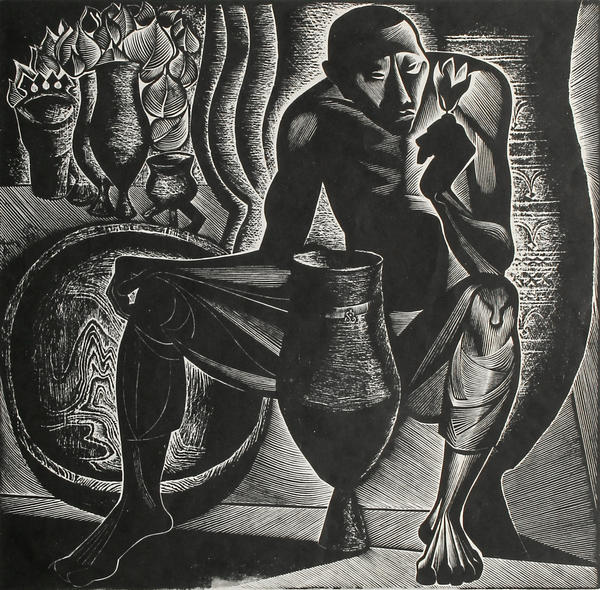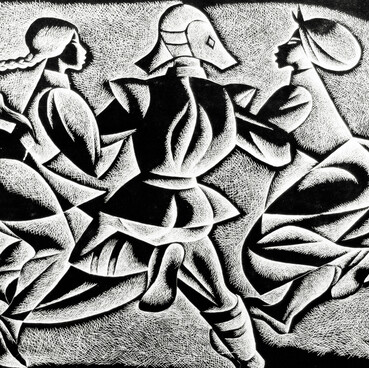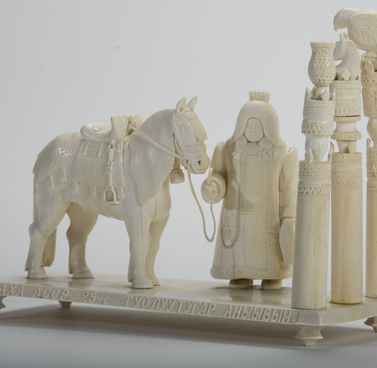Yakut graphic artist Valerian Vasilyev worked on the series 'Old Yakut Masters' throughout 1967. The series reflects the author’s thoughts about national cultural roots, continuity of art and traditional creativity. In his works, he turned to the black and white linocut - a printing method in which the authors transfer the drawing on linoleum, cut it with special knives, and then make an impression on a sheet of paper. This method was invented in 1909 in Russia, and due to its easy execution, it quickly became popular around the world.
Old Yakut Masters are the engravings that depict traditional crafts of the Sakha people. The author admitted that he was “won by the work of old masters, primarily those working with wood.” Therefore, he painted figures of embroiderer and skilled woodcarvers, and olonkhosut narrator. In these people, the artist sees those who give the expression to the ancient folk culture that is eternal. Images of masters and their art continue to live in modern Yakutia.
Sardaana is the central sheet of the series. Vasilyev portrayed a master carver of choron, surrounded by his works. Choron is a national Yakut vessel for fermented milk drink - kumis. The dishes were made of wood, and their shape resembled a goblet on one or three legs. The artisans carved each item manually, so the chorons differed from one another, and each had an imprint of the author’s handwriting.
In his left hand, a hero of the engraving holds a delicate translucent flower of sardaana - a type of lily that grows in Yakutia and is a symbol of northern summer. The bud is an embodiment of perfect form for the artist that nature itself has created. At the same time, the master’s half-naked body and smooth lines of his figure echo with the shapes of items and outlines of the leaves in the background.
According to Vasilyev, a person and the world around him become one. Therefore, the author surrounded the artisan by wooden crafts on purpose. This material is associated with the Tree of Life in the Sakha people’s culture, and symbolizes fertility and cyclical nature of life. ‘The master loved and knew his nature. It helped him to be an artist’, Vasilyev wrote about this engraving.



